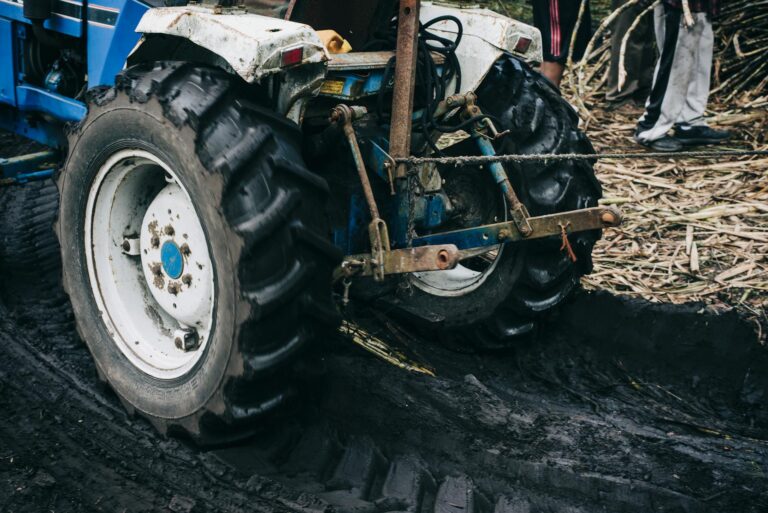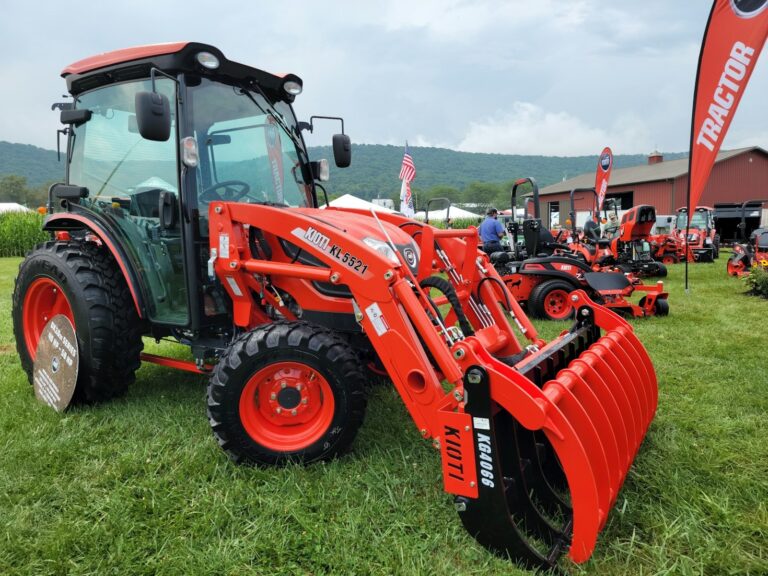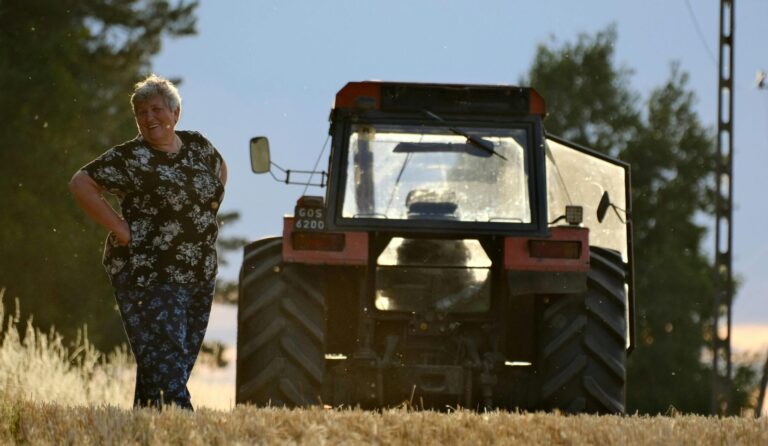When talking about iconic names in agricultural machinery, Ford farm tractors stand out as one of the most influential brands in the history of farming. For over seven decades, Ford tractors have shaped the way farmers plow, plant, and harvest crops around the world.
Known for their durability, reliability, and innovative engineering, Ford tractors remain beloved by collectors and farmers alike—even though production ended in the 1990s after the brand merged with New Holland.
In this guide, we will take a deep dive into the legacy of Ford farm tractors, explore their evolution through the decades, and present a comprehensive list of Ford farm tractors sorted by model.
A Brief History of Ford Farm Tractors
The Ford Motor Company entered the agricultural machinery market in 1917 with the launch of the Fordson Model F, which became the world’s first mass-produced tractor. This revolutionary machine replaced horses on farms across America and Europe. Over time, Ford improved designs, introduced powerful engines, and developed models suitable for small farms, large-scale agriculture, and industrial use.
In 1986, Ford purchased New Holland, merging the two brands into Ford New Holland, and by 1991, the Ford name was phased out in favor of New Holland. However, the legacy of Ford tractors continues, and many of their models are still widely used today.
Why Farmers Love Ford Farm Tractors
Before exploring the models, let’s understand why Ford tractors gained worldwide recognition:
-
Affordability: Ford tractors were priced lower than many competitors, making them accessible to small and medium-sized farmers.
-
Durability: Built with strong engines and simple mechanical parts, they were made to last for decades.
-
Innovation: Ford introduced several groundbreaking features, including the three-point hitch system (developed by Harry Ferguson, later adopted by Ford).
-
Global Reach: Manufactured not just in the U.S., but also in England, Belgium, and other countries, Ford tractors became a worldwide farming icon.
-
Versatility: Suitable for plowing, planting, transportation, and industrial work.
Ford Farm Tractors Sorted by Model
Ford tractors can be organized by series and decade of production. Below, we present a detailed list of Ford farm tractors sorted by model to help you navigate their legacy.
1. Fordson Era (1917–1964)
Ford’s earliest tractors were branded Fordson. These models played a key role in mechanizing farming worldwide.
Popular Fordson Models:
-
Fordson Model F (1917–1928) – The first mass-produced tractor in the world.
-
Fordson Model N (1929–1945) – Popular in the UK, widely used during WWII.
-
Fordson E27N Major (1945–1952) – Larger and more powerful, ideal for heavy farm work.
-
Fordson Dexta (1957–1964) – Compact tractor for small farms.
-
Fordson Super Dexta (1962–1964) – Improved horsepower and hydraulics.
-
Fordson Major (1952–1964) – Powerful model, often used in export markets.
-
Fordson Super Major (1960–1964) – Enhanced version with improved transmission.
2. 1000 Series (1964–1975)
In 1964, Ford replaced the Fordson brand with the Ford 1000 Series. These tractors were widely successful and are still found working on farms today.
Popular Models:
-
Ford 2000 – Compact utility tractor (31–36 HP).
-
Ford 3000 – Versatile mid-size tractor (37–47 HP).
-
Ford 4000 – Heavy-duty utility tractor (48–55 HP).
-
Ford 5000 – Larger model (69 HP), very popular worldwide.
-
Ford 7000 – First Ford tractor with a turbocharged diesel engine (89 HP).
3. 600/700/800/900 Series (1955–1964)
Before the 1000 series, Ford released the hundred series tractors in the mid-1950s.
Key Models:
-
Ford 600 – Utility tractor with 30–34 HP.
-
Ford 700 – Row-crop version of the 600.
-
Ford 800 – More powerful, around 40–45 HP.
-
Ford 900 – Row-crop version of the 800.
4. 6000 Series (1961–1967)
The Ford 6000 was one of Ford’s first attempts at a high-horsepower row-crop tractor.
-
Ford 6000 Commander – Powered by a 66 HP diesel engine. Known for its futuristic styling but also for early mechanical issues.
5. 100 Series (1965–1975)
This generation further modernized Ford tractors with improved styling and hydraulics.
Popular Models:
-
Ford 2600 – Compact, versatile model.
-
Ford 3600 – Successor to the 3000, with around 48 HP.
-
Ford 4600 – Utility tractor with 52 HP.
-
Ford 5600 – Mid-range tractor, 70 HP.
-
Ford 6600 – Larger 76 HP model.
-
Ford 7600 – Turbocharged, 90 HP tractor.
6. Series 10 (1981–1993)
One of the most successful generations, the Series 10 tractors were extremely durable and are still beloved worldwide.
Popular Models:
-
Ford 2110 / 2310 / 2610 / 2910 / 3610 / 3910
-
Ford 4110 / 4610 / 5610 / 6410 / 6610 / 6810
-
Ford 7610 / 7710 / 7810 – Larger turbocharged tractors.
-
Ford 8210 – High-powered 4WD tractor, around 110 HP.
7. Series 30 (1990–1991)
Produced during the transition to Ford New Holland, these tractors carried the Ford name in their final years.
Popular Models:
-
Ford 4630 – Around 60 HP.
-
Ford 5030 – Utility model, around 75 HP.
-
Ford 6630 – Mid-range 90 HP tractor.
-
Ford 7630 / 7730 / 8630 / 8730 – Higher horsepower tractors (95–160 HP).
8. Industrial and Utility Models
Ford also produced specialized tractors for municipal, industrial, and utility work.
Examples:
-
Ford 4400 / 4500 – Industrial backhoe tractors.
-
Ford 3400 – Utility tractor for loader work.
-
Ford 535 / 5500 – Construction-oriented machines.
Ford Tractors by Horsepower
To make it easier, here’s a quick breakdown of Ford farm tractors sorted by horsepower range:
-
20–40 HP: Ford 2000, Ford 600, Fordson Dexta
-
40–60 HP: Ford 3000, Ford 4000, Ford 3600, Ford 4600
-
60–90 HP: Ford 5000, Ford 5600, Ford 6600, Ford 7600
-
90–120 HP: Ford 7000, Ford 7610, Ford 8210, Ford 8630
-
120+ HP: Ford 8730, Ford 8830
Choosing the Right Ford Tractor
Although new Ford tractors are no longer made, many used models are available worldwide. Choosing the right tractor depends on:
-
Farm Size
-
Small farms: Ford 2000, 3000, 3600
-
Medium farms: Ford 5000, 6600, 7610
-
Large farms: Ford 8210, 8630, 8730
-
-
Intended Use
-
Row crops: Ford 700, 900, 4000, 5000
-
Utility & loader work: Ford 3400, 4400, 4600
-
Heavy-duty work: Ford 7600, 8210, 8730
-
-
Budget & Maintenance
-
Older models like the 8N, 2000, or 3000 are very affordable and easy to repair.
-
High-horsepower tractors like the 8730 may require more investment but offer excellent performance.
-
Ford vs Competitors
During its peak, Ford competed with John Deere, International Harvester, and Massey Ferguson. While John Deere often led in technology and market share, Ford gained loyalty for its affordability and mechanical simplicity. Many farmers preferred Ford tractors because parts were widely available and easy to repair without advanced tools.
Final Thoughts
Though Ford tractors are no longer in production, their legacy remains unmatched. Farmers around the globe still use them daily, while collectors restore classic models like the Fordson, 8N, and 5000 series. By reviewing this guide on Ford farm tractors sorted by model, you can better understand their evolution and decide which models might be ideal for your farm or collection.
If you’re searching for a dependable, affordable, and historically significant tractor, a Ford farm tractor remains one of the best choices.
FAQs on Ford Farm Tractors
Q1. When did Ford stop making tractors? Ford officially ended tractor production in 1991, transitioning to New Holland branding.
Q2. What is the most popular Ford tractor model? The Ford 5000 and Ford 8N are among the most popular due to their reliability and global use.
Q3. Are Ford tractors still in use today? Yes, thousands of Ford tractors are still actively used worldwide, especially in developing countries.
Q4. Where can I buy Ford tractor parts? Parts are available through aftermarket suppliers, New Holland dealers, and online marketplaces.
Q5. Which Ford tractor is best for small farms? Models like the Ford 2000, 3000, and 3600 are excellent for small farms due to their compact size and fuel efficiency.




Pingback: Ford Tractor Models: A Complete Guide For Collectors And Farmers